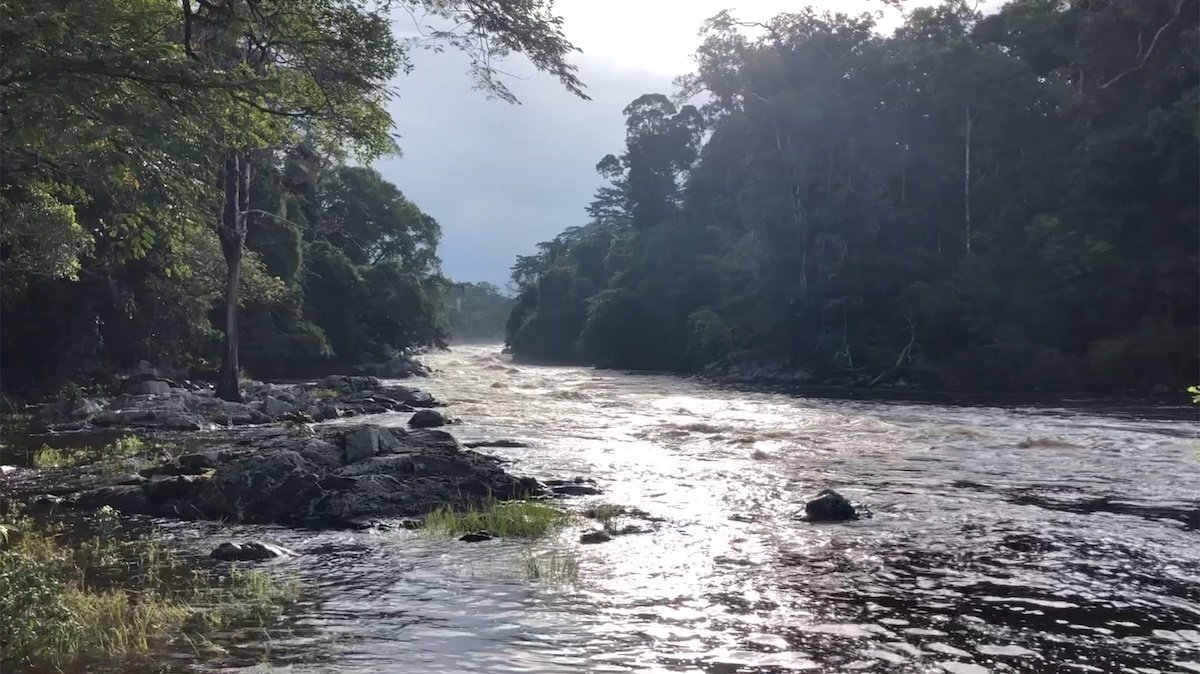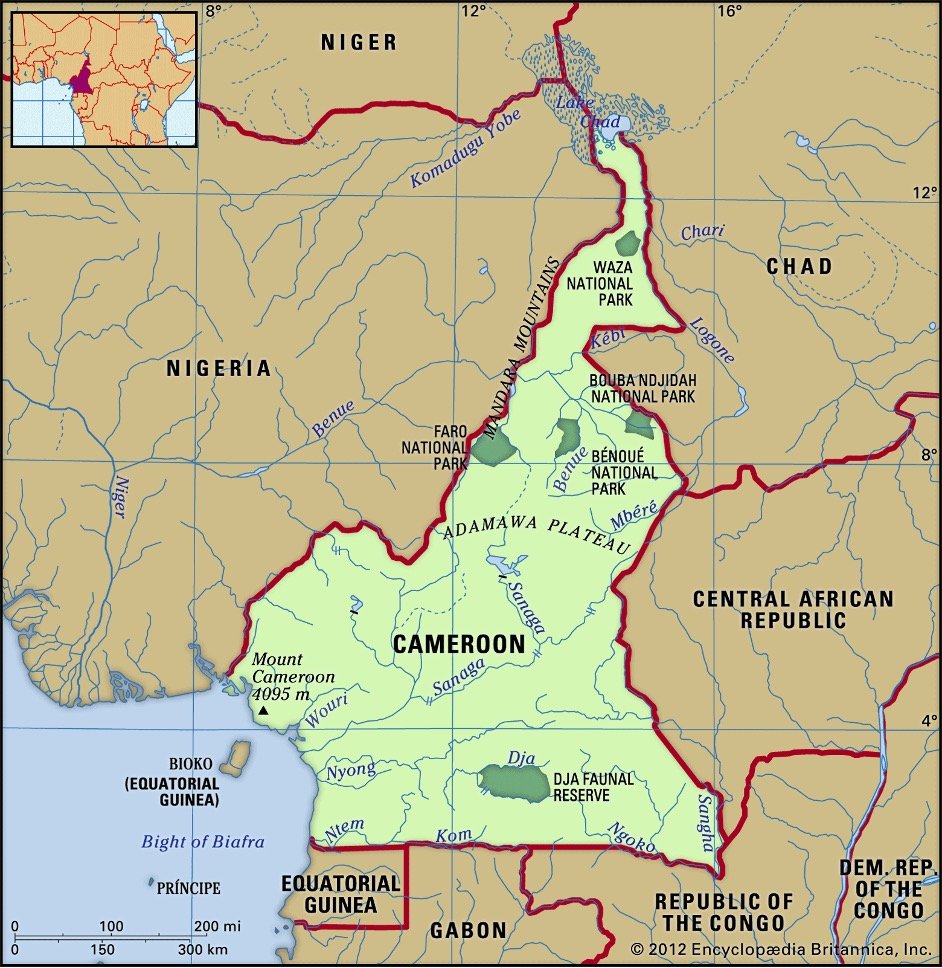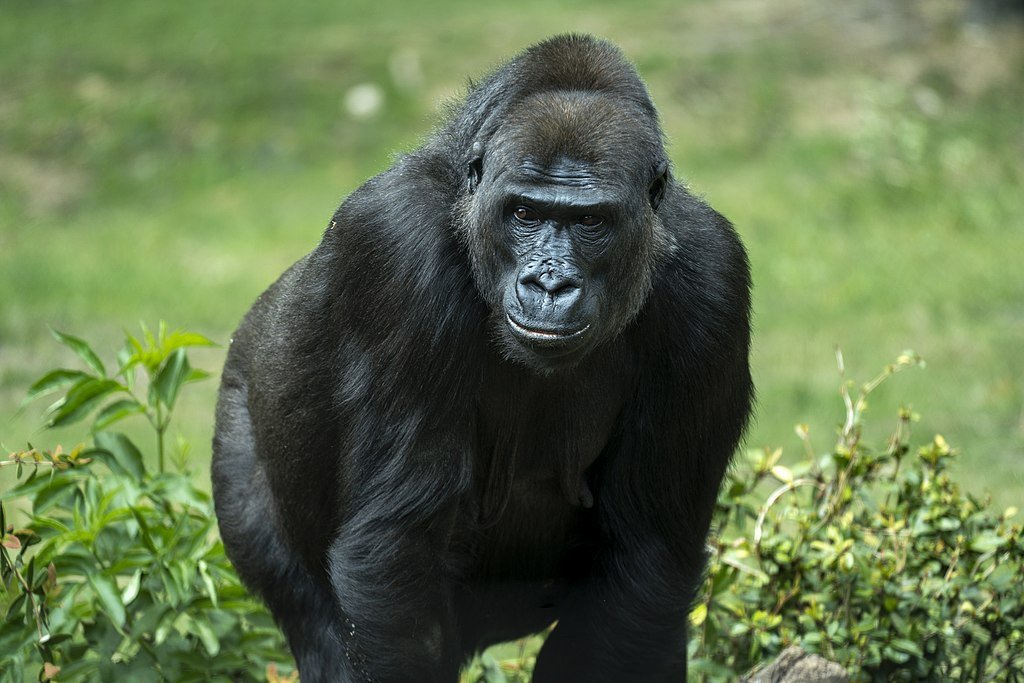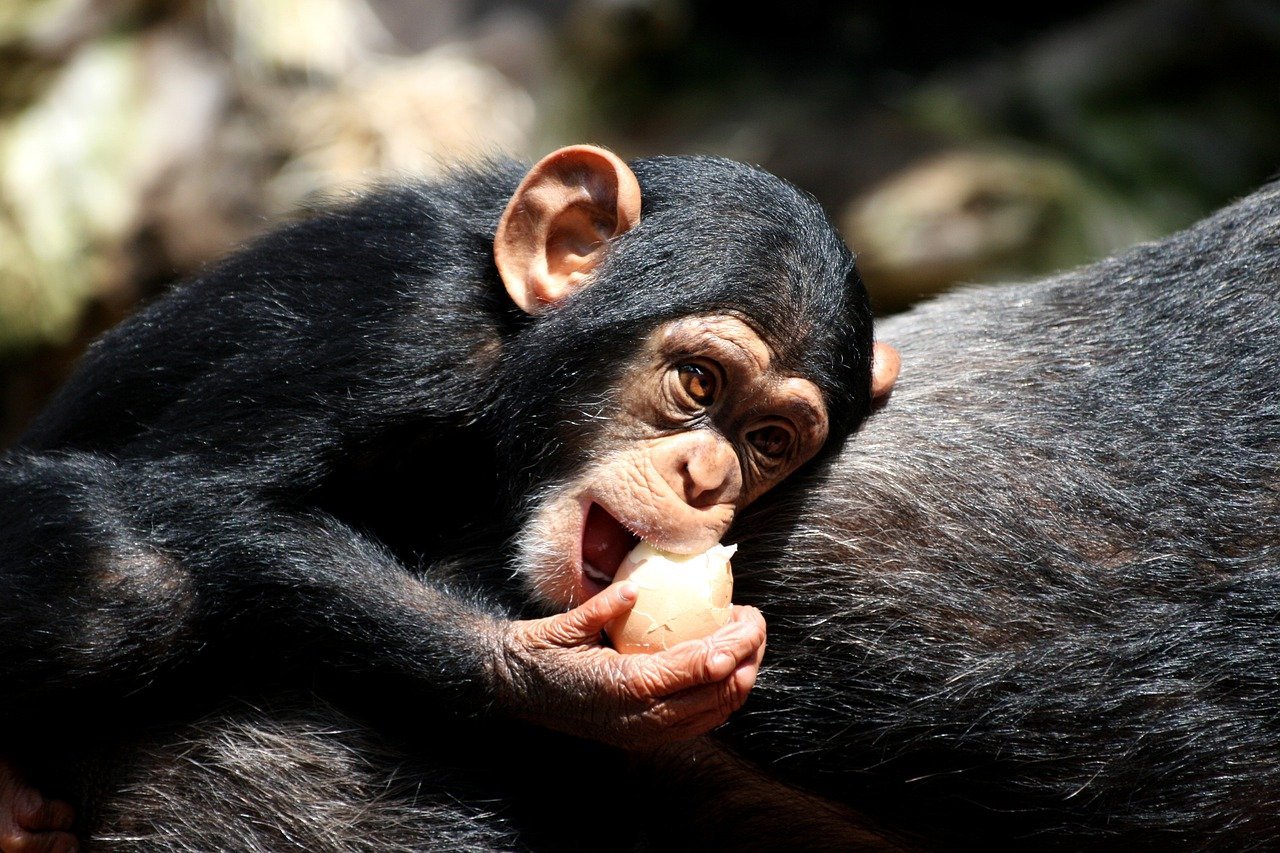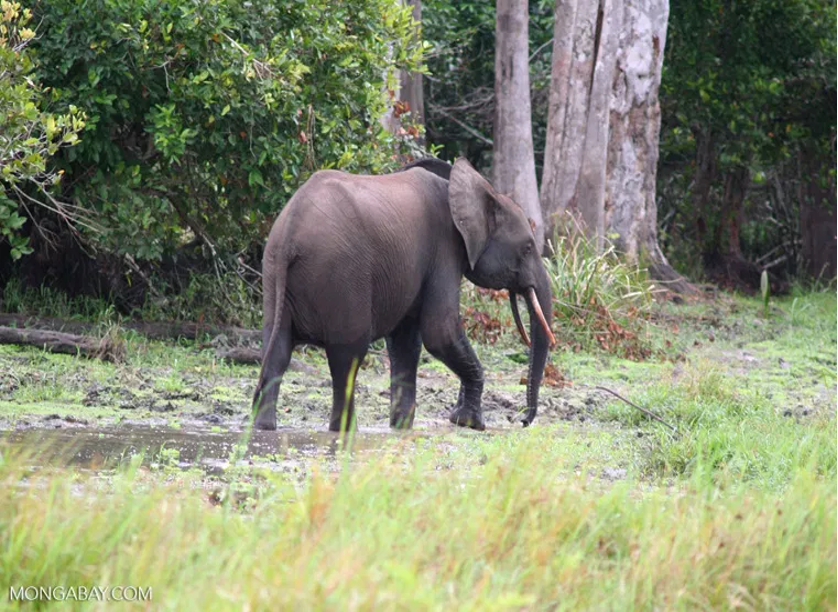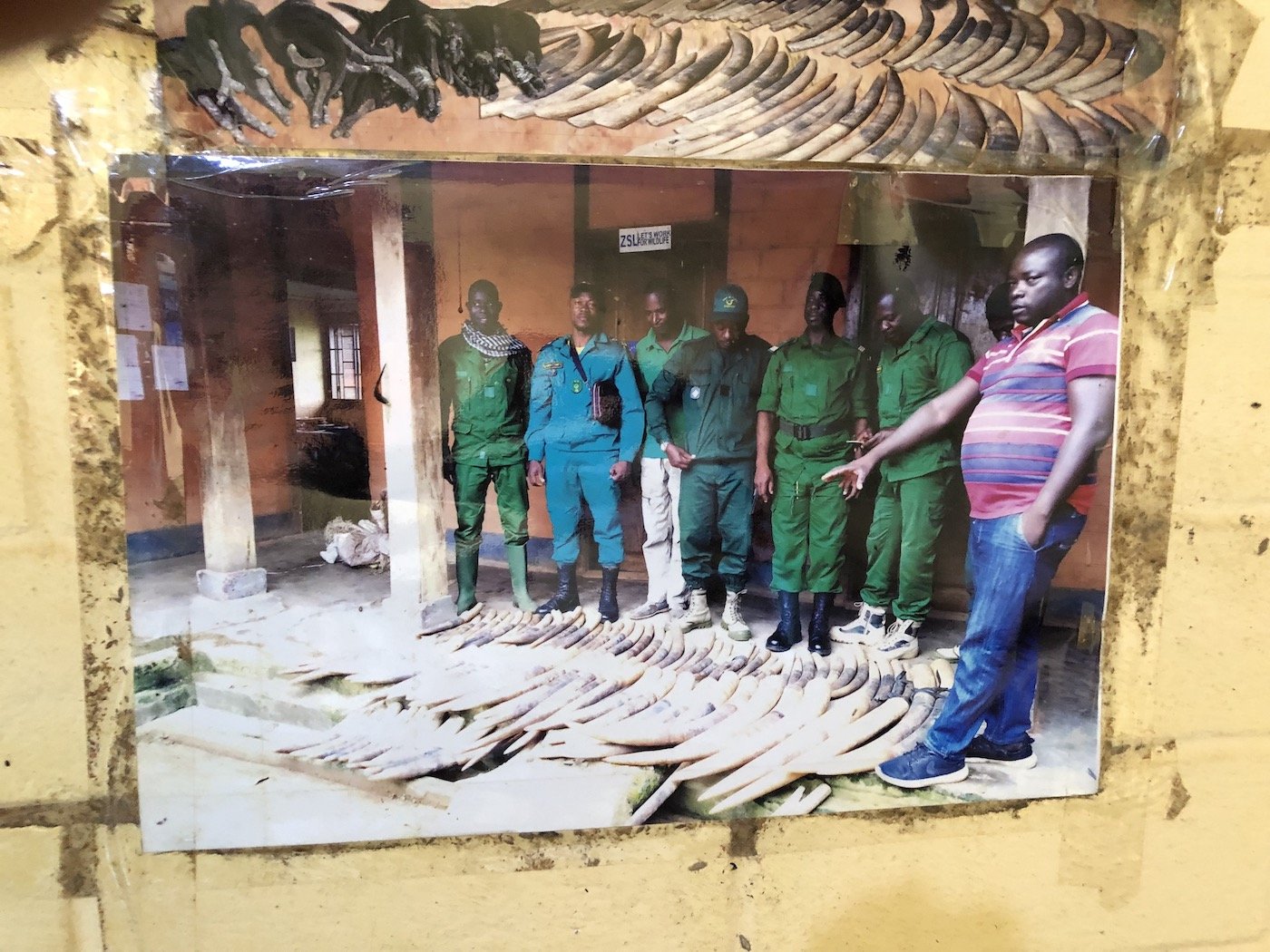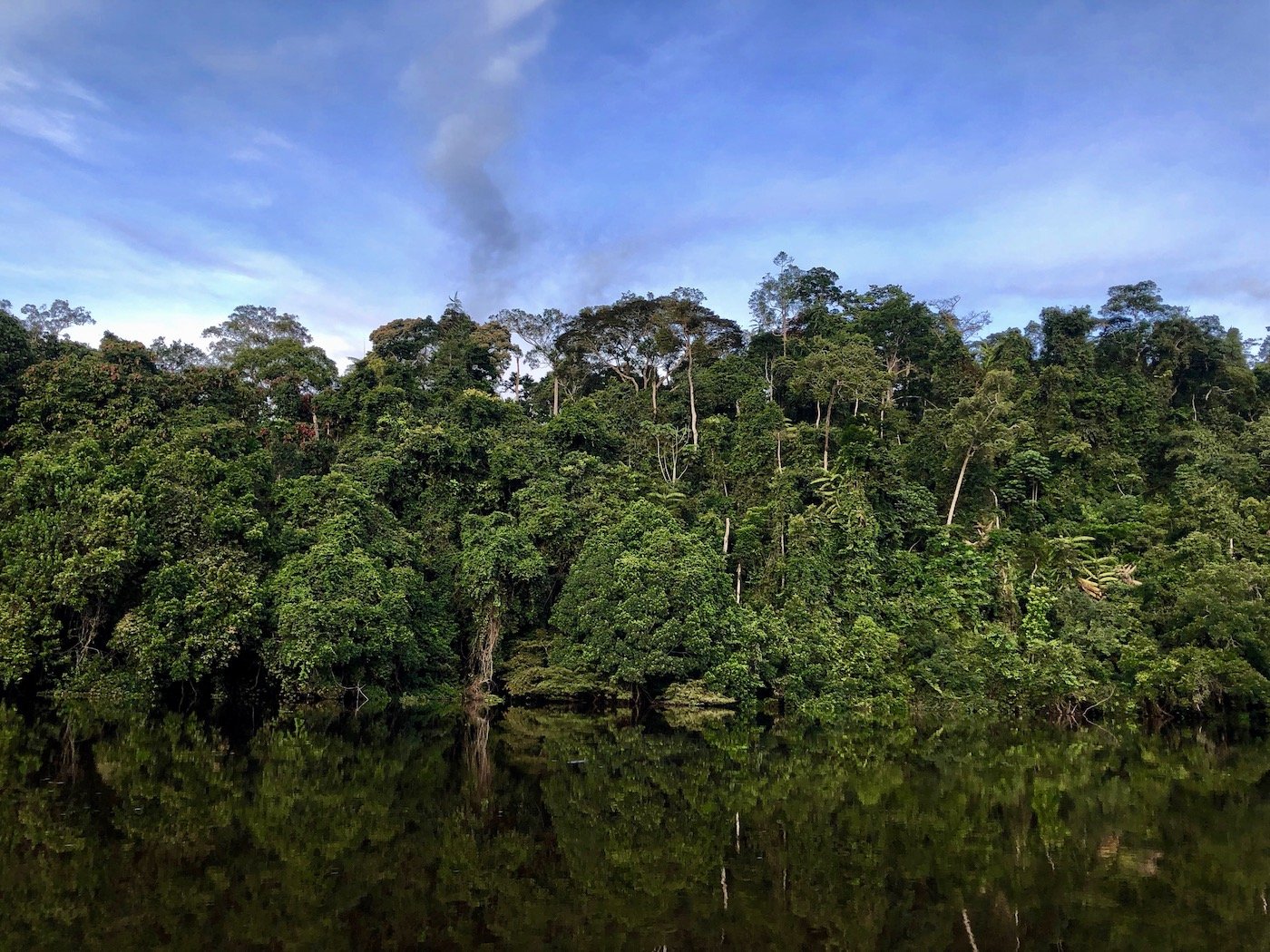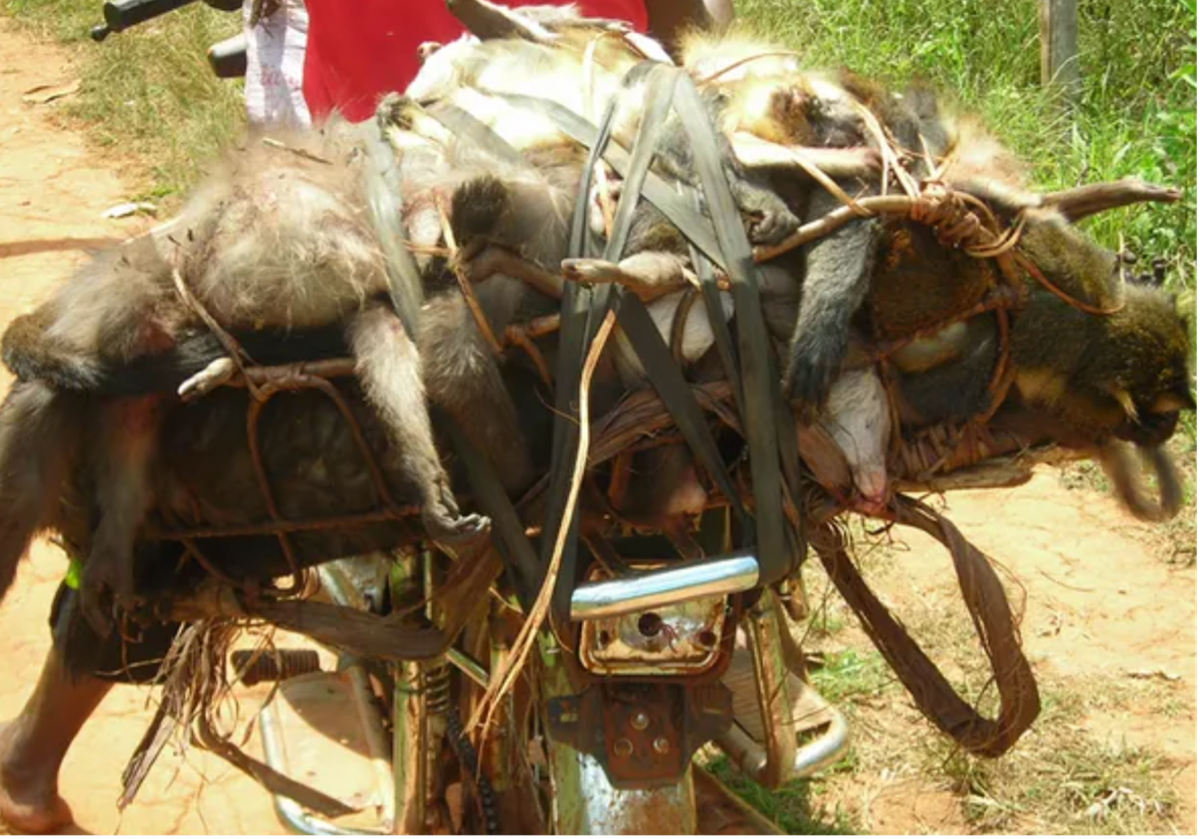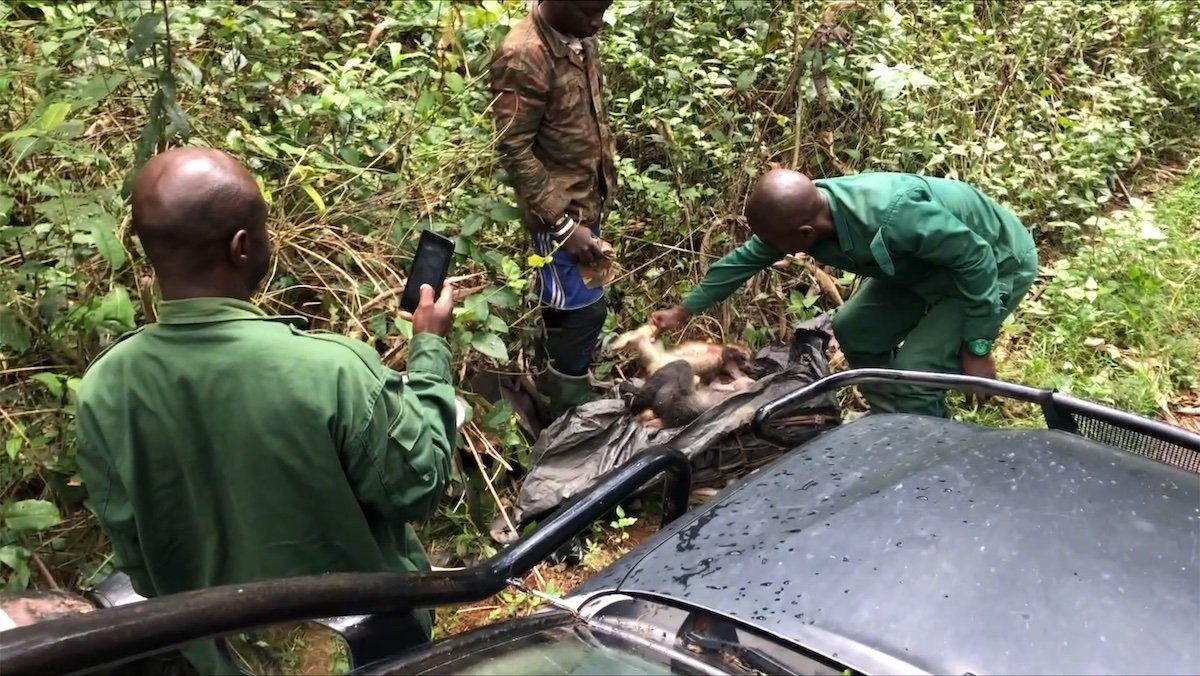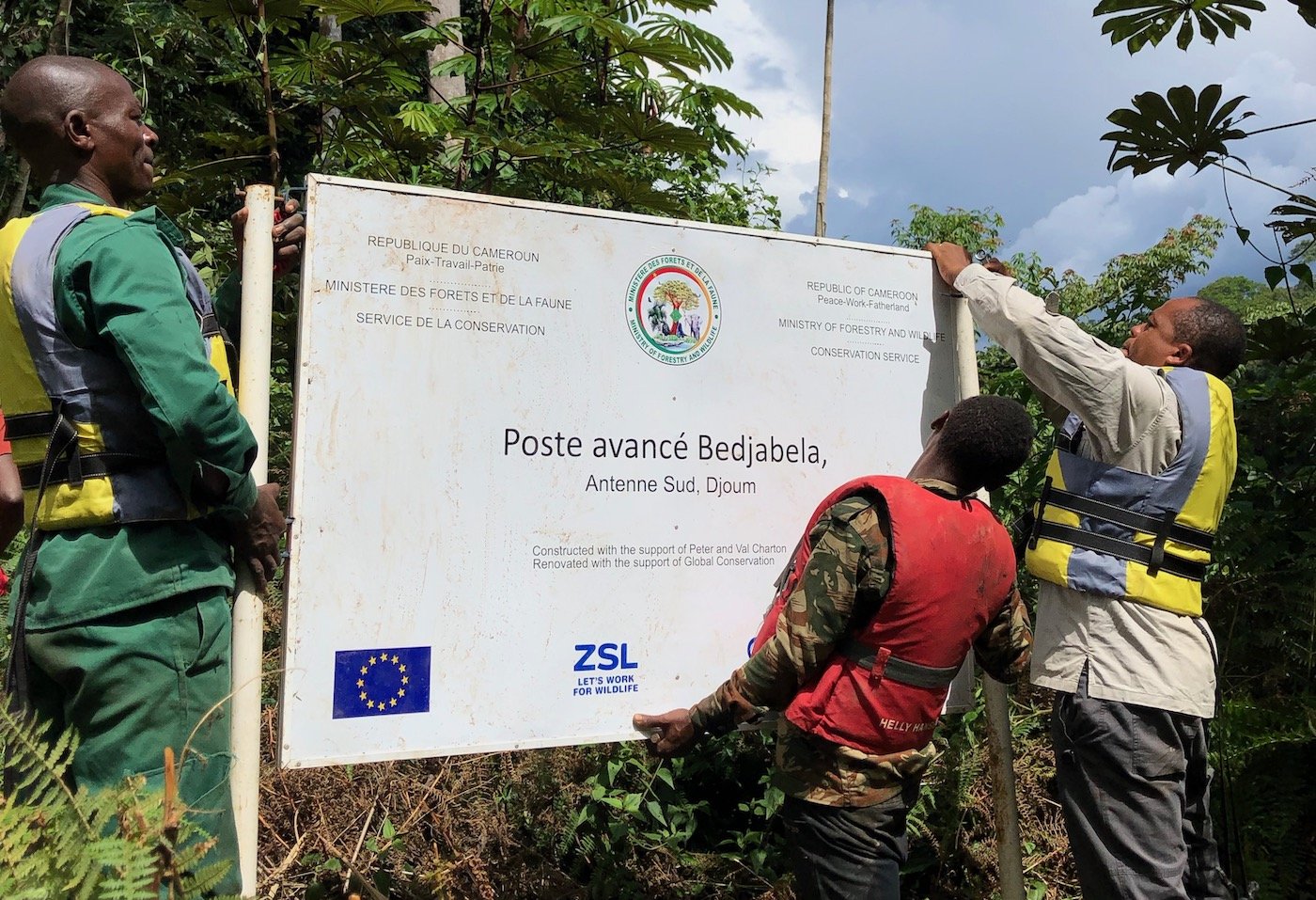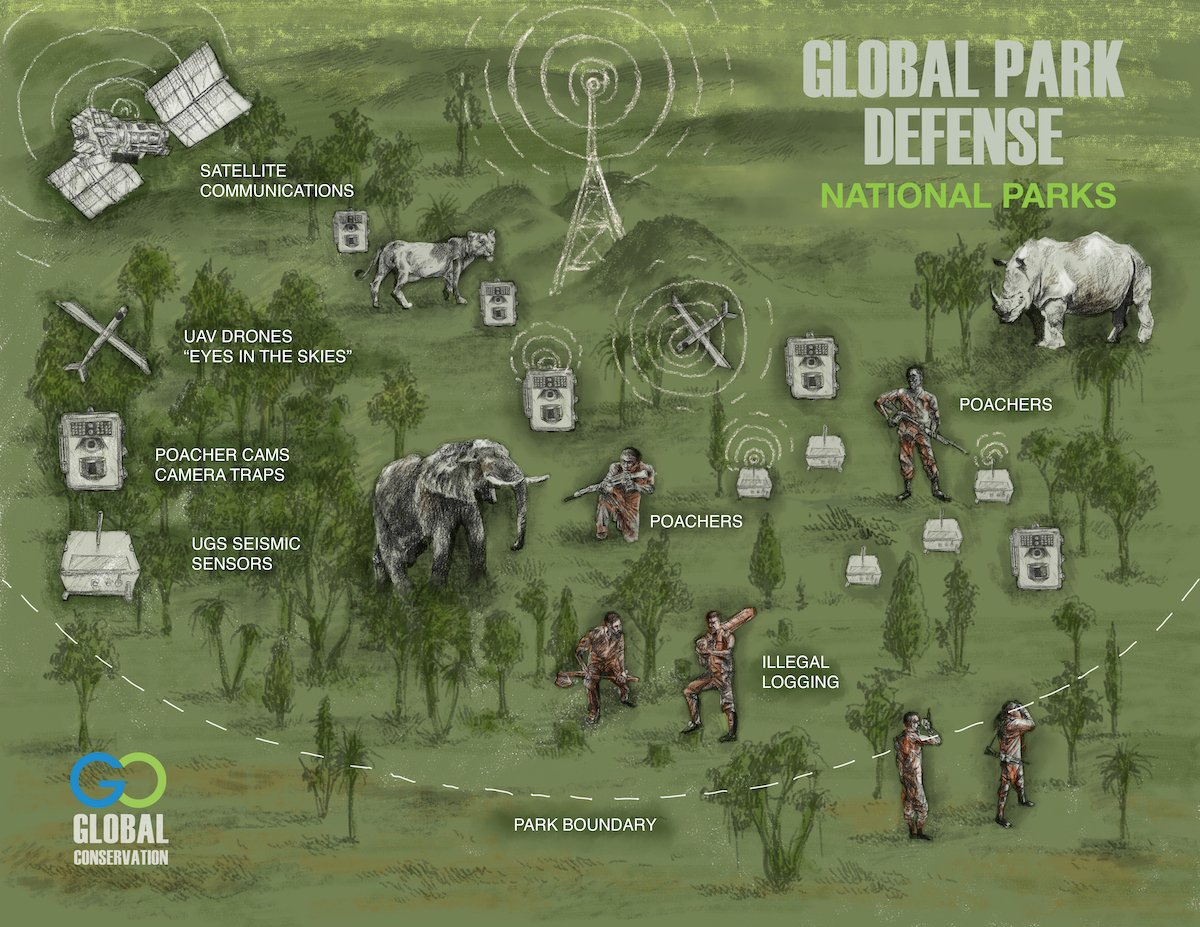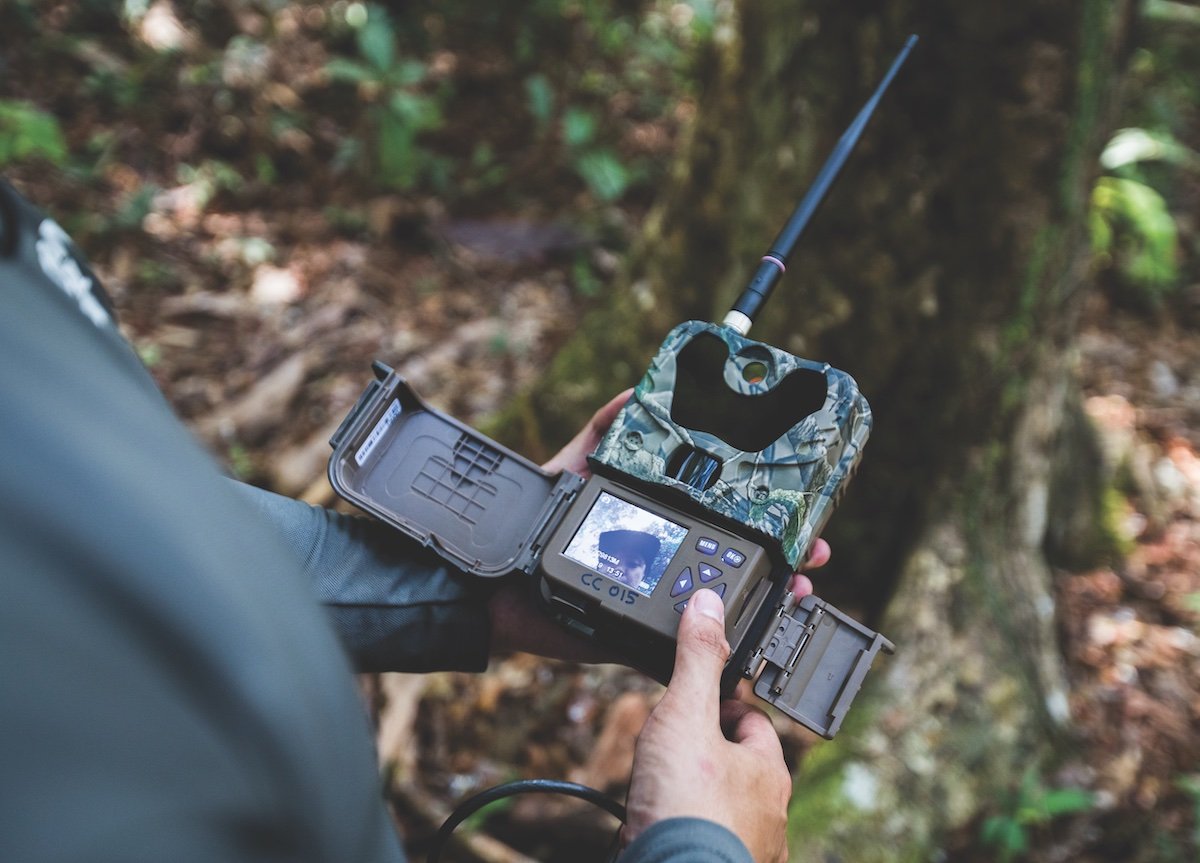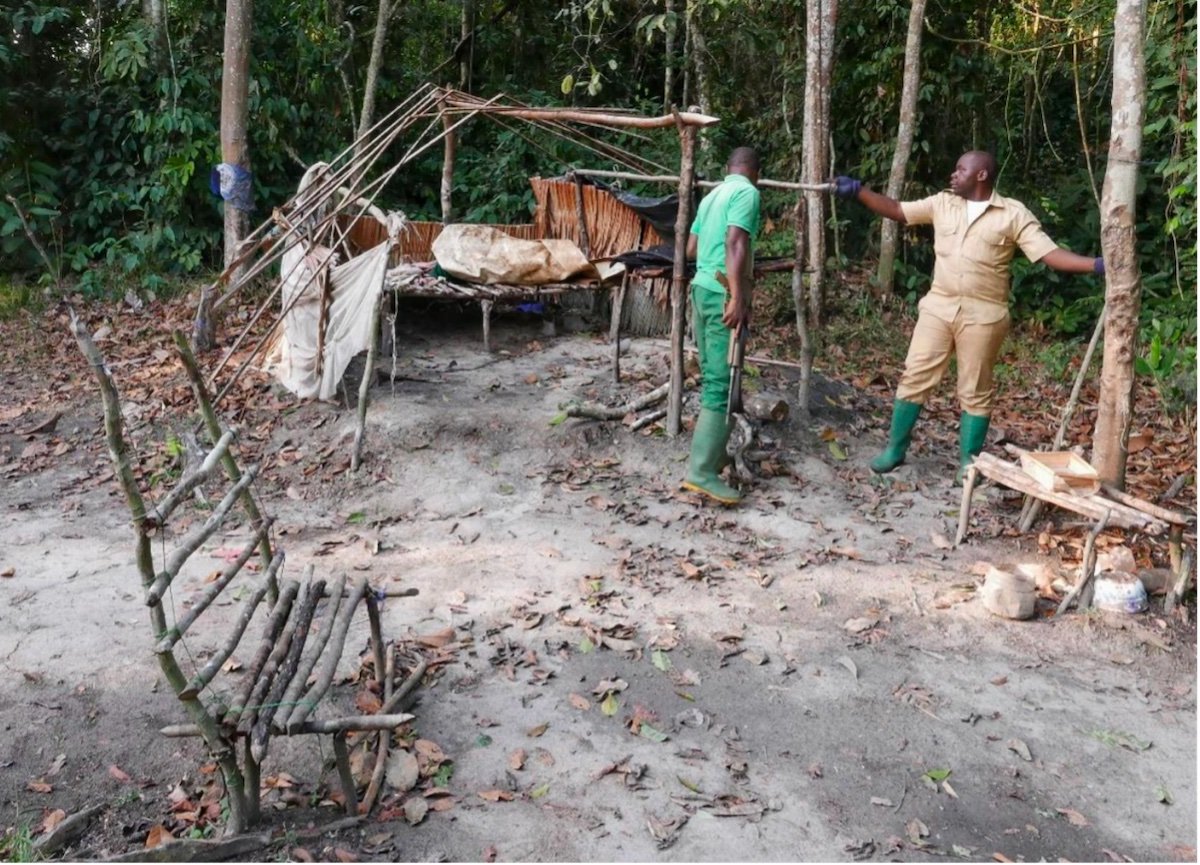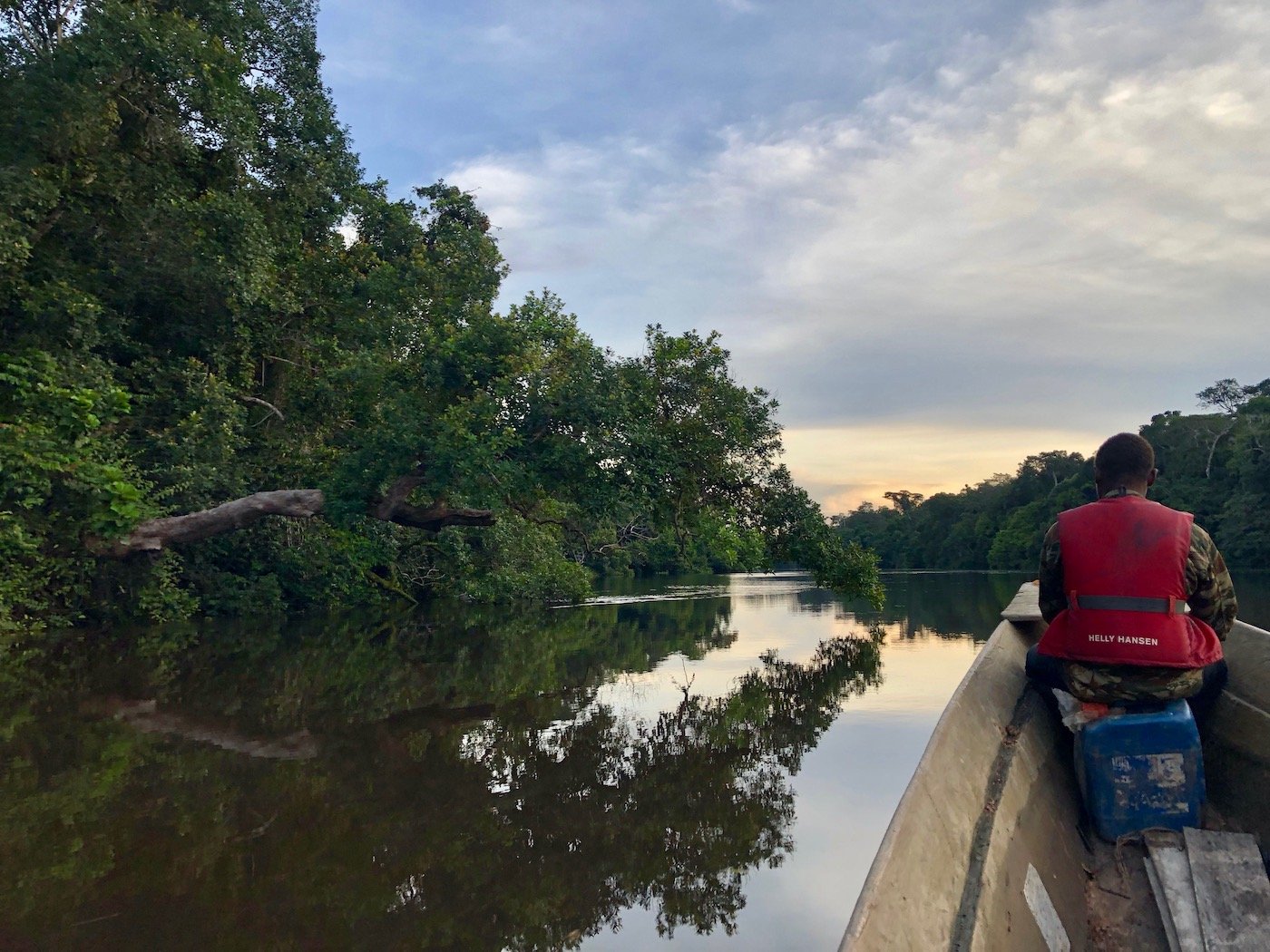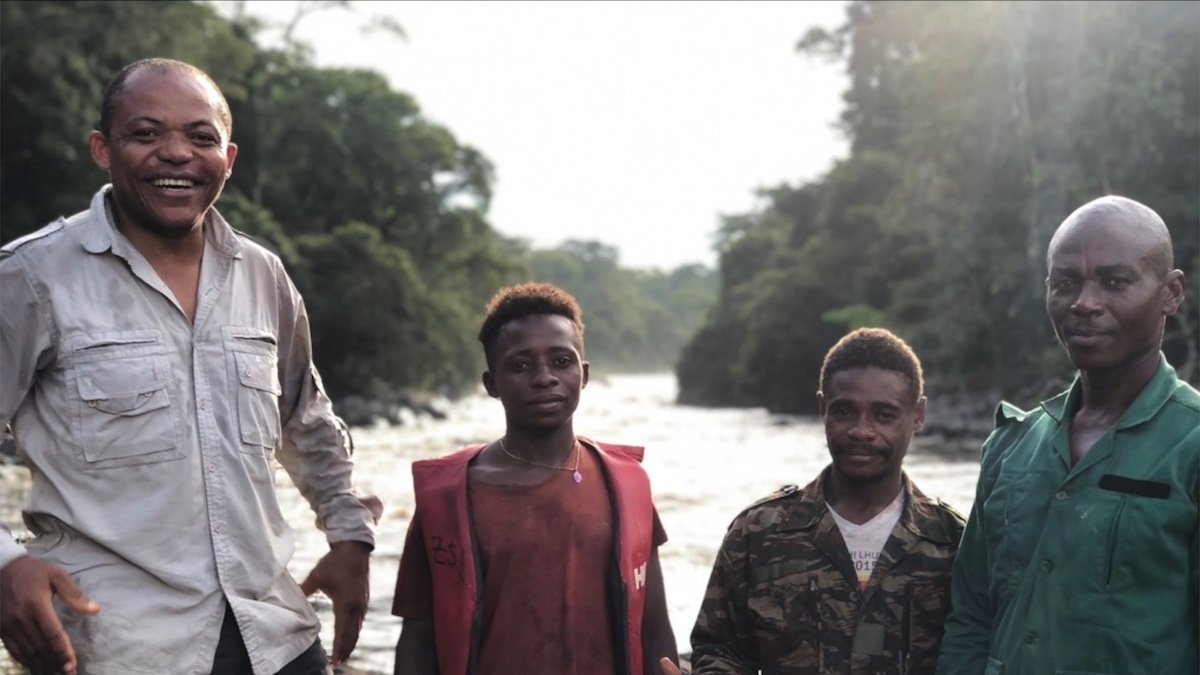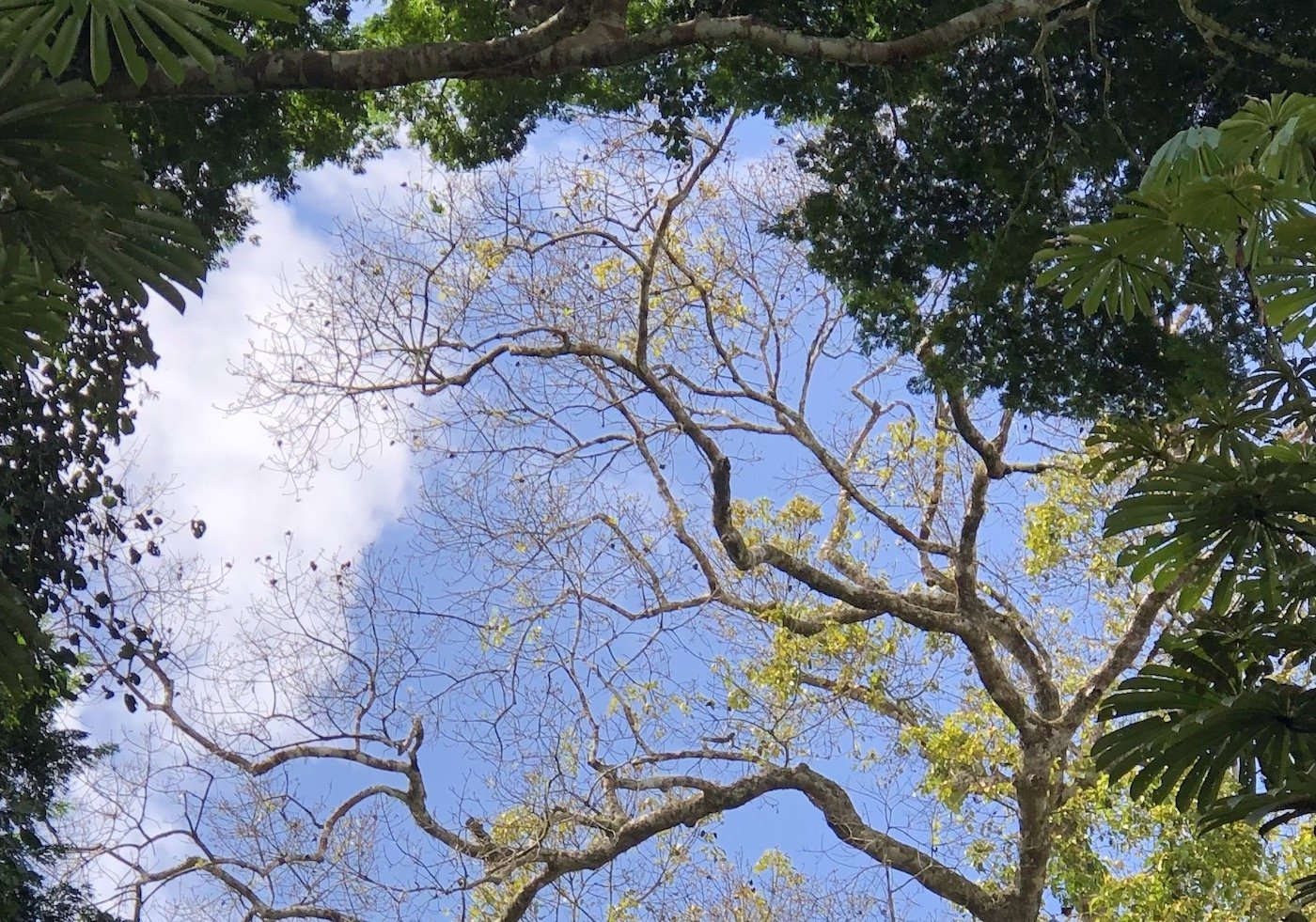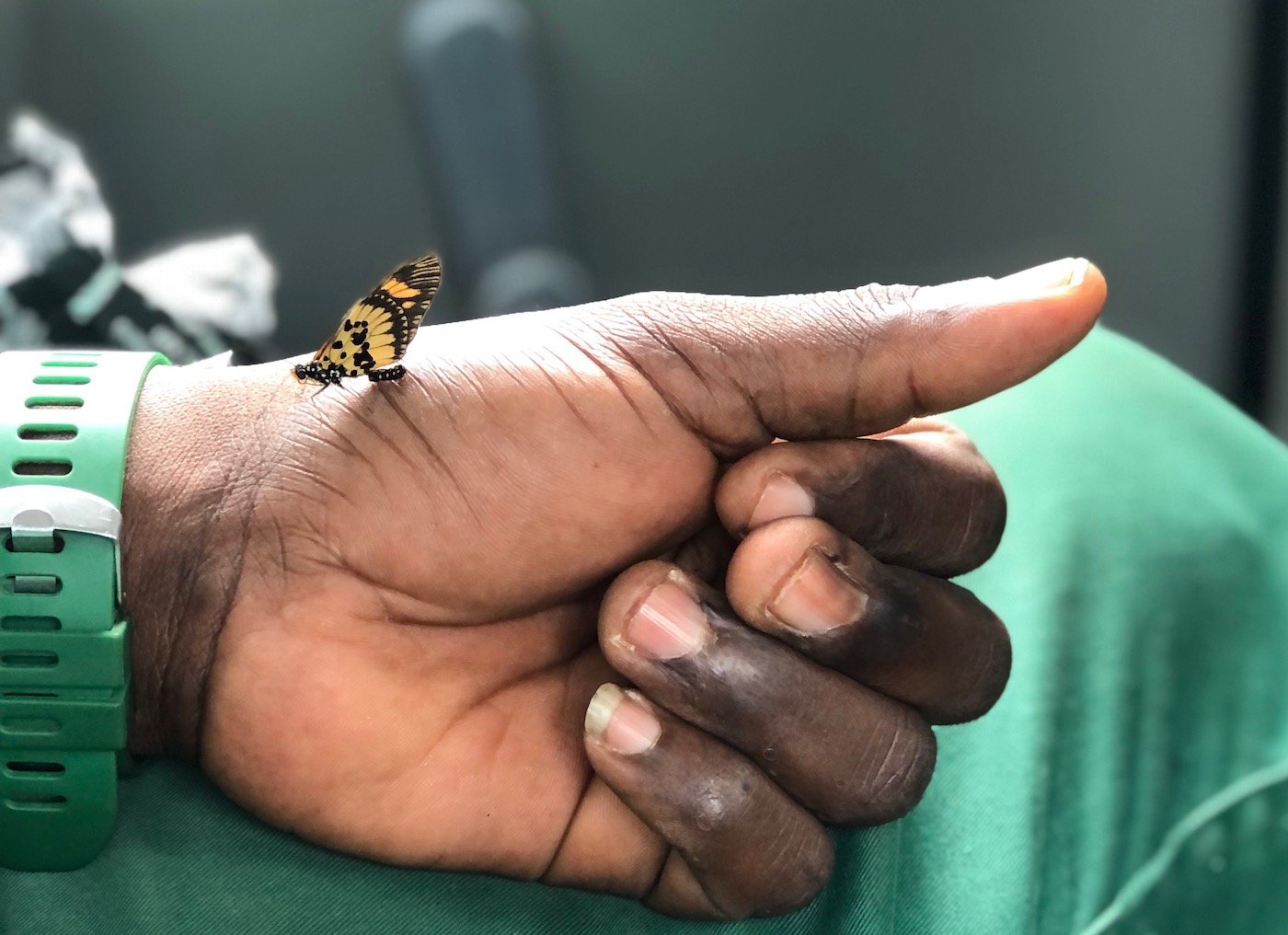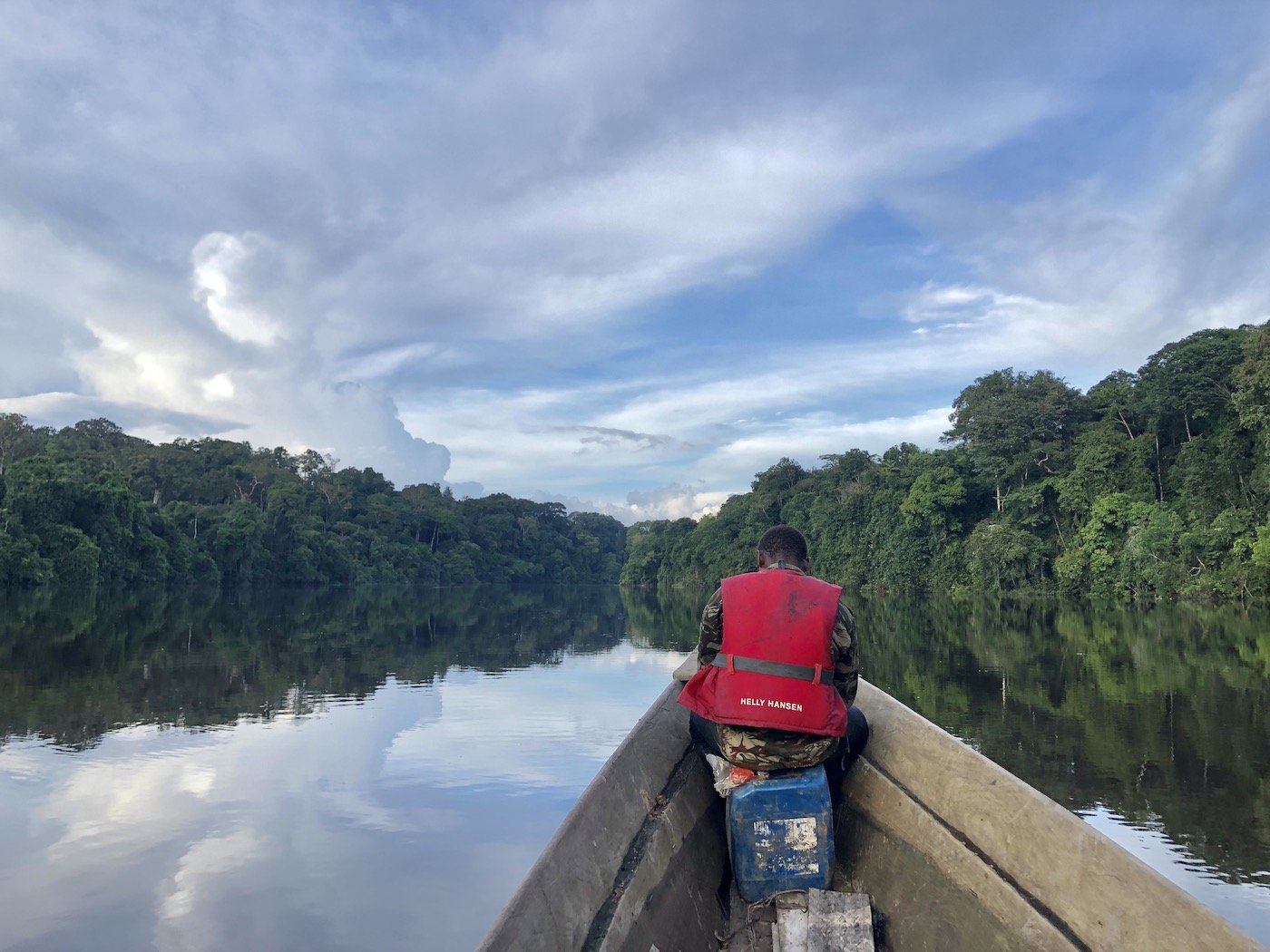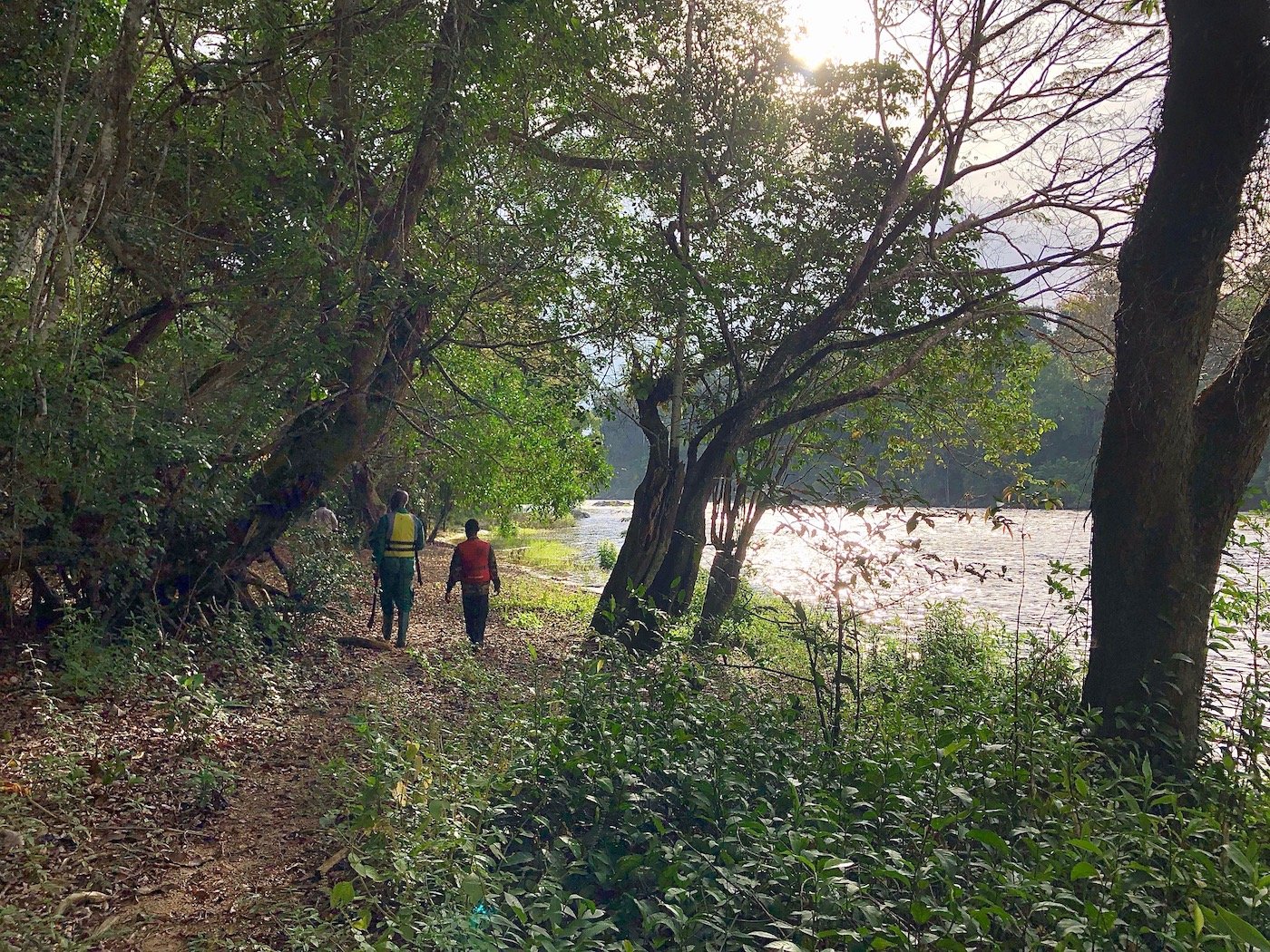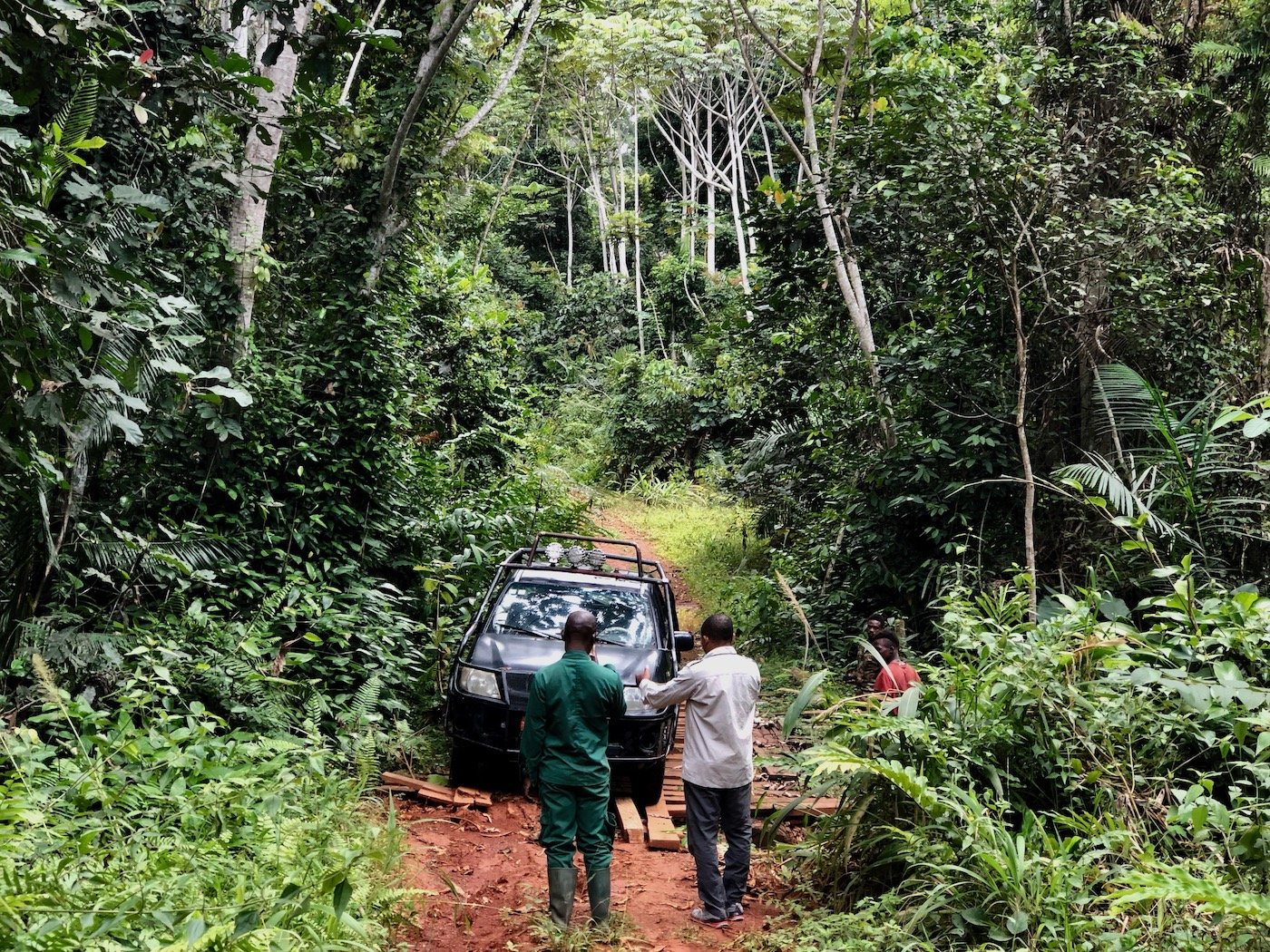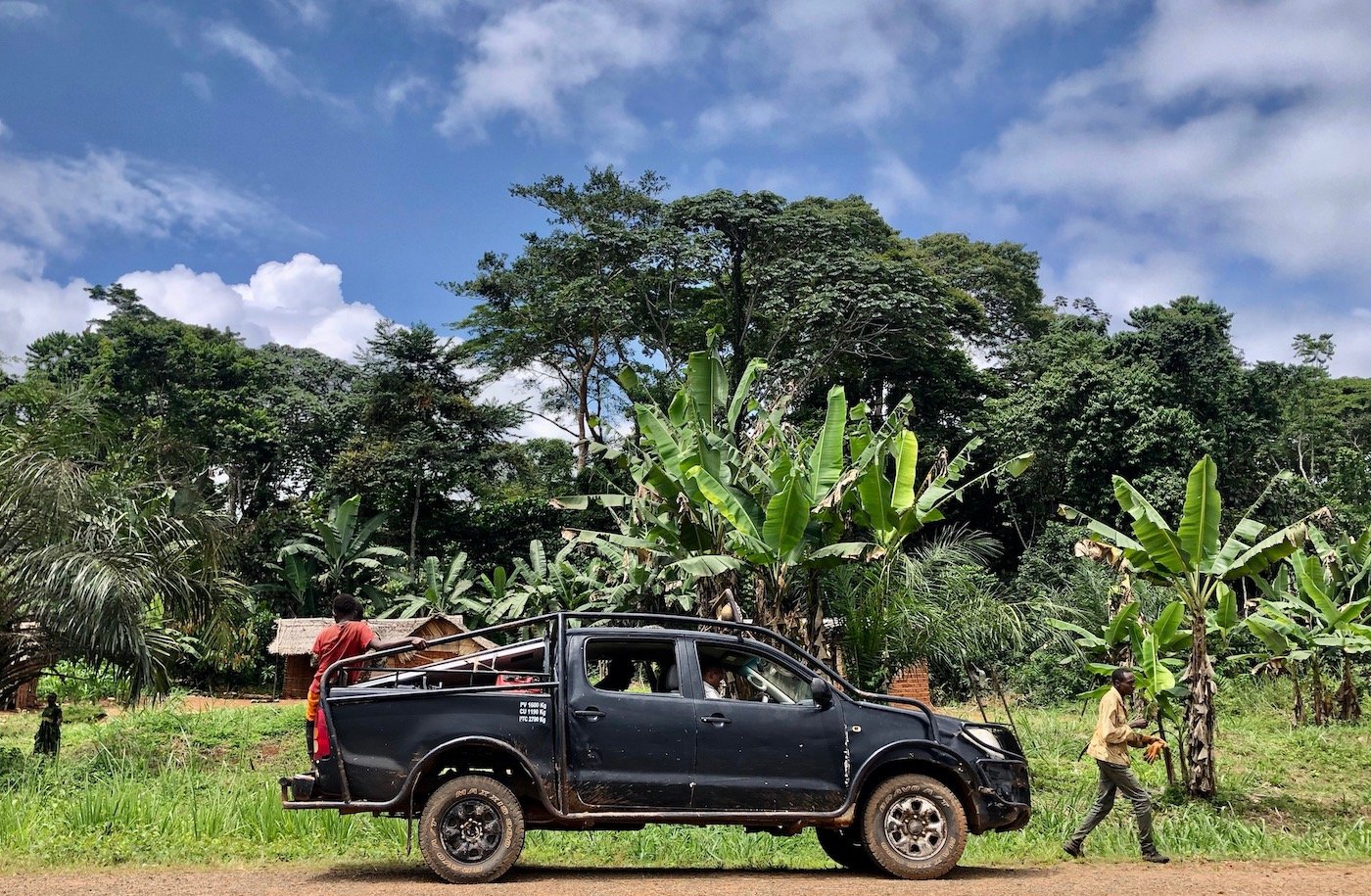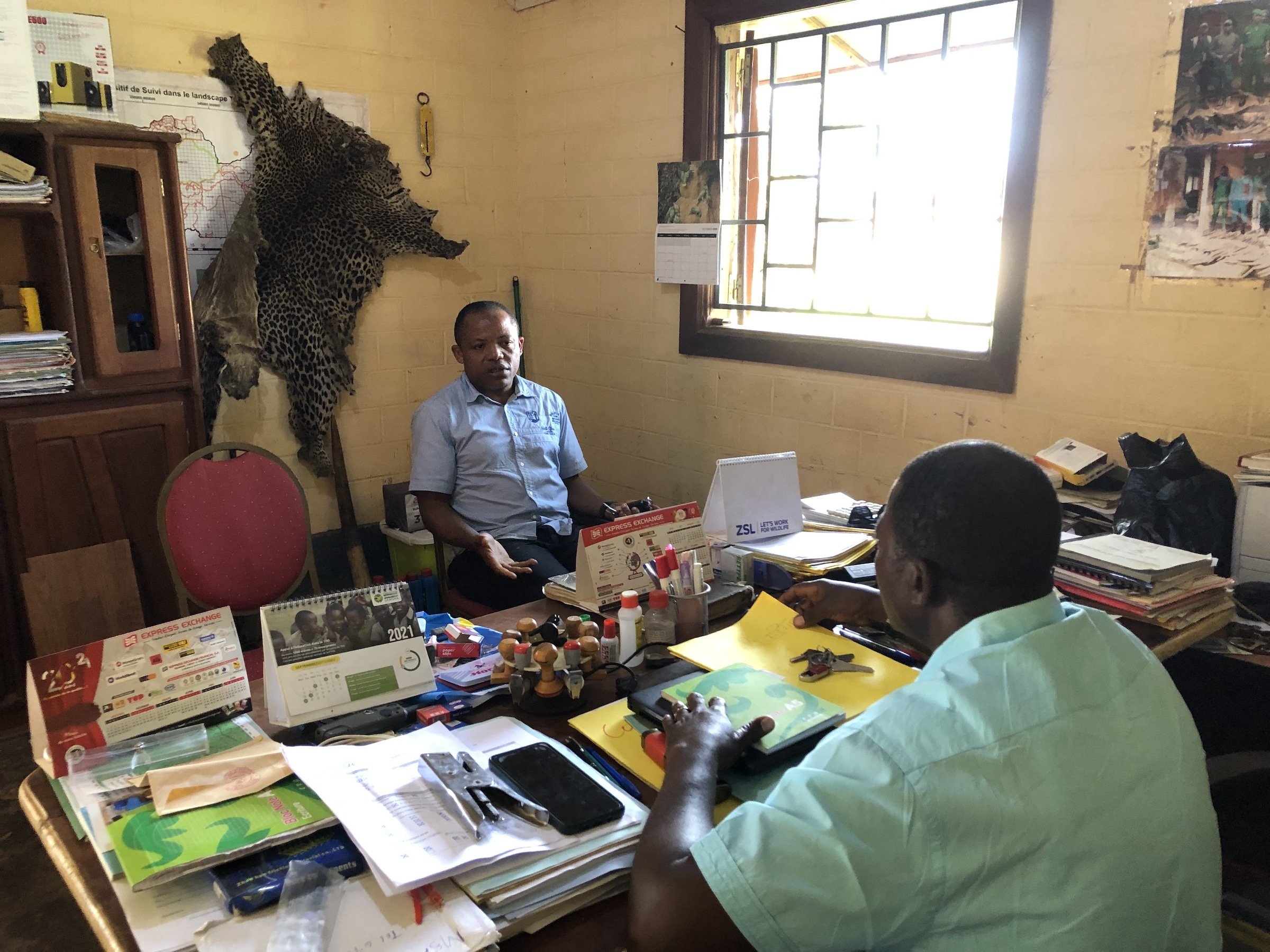Dja World Heritage Site, Cameroon
OVERVIEW
In the southern reaches of the Central African country of Cameroon, near the borders with Gabon and the Republic of the Congo, lies a primeval rainforest called Dja. Here, Global Conservation is entering into our first GC Projects in Central Africa, where we will deploy Global Park Defense to address critical threats to Dja World Heritage Park in Cameroon, Minkébé National Park in Gabon, and their connected landscapes.
SIZE
560,000 Hectares
GOAL
$720,000
VISITORS BY 2025
2,000
Introduction
In the southern reaches of the Central African country of Cameroon, near the borders with Gabon and the Republic of the Congo, lies a primeval rainforest called Dja. Trees the size of fifteen-story buildings tower above forest elephants, gorillas, and leopards. This is a forest fortress protected by a moat – a loop of the Dja River almost completely surrounds the Reserve, sheltering it.
The Dja Faunal Reserve is the last bastion for forest elephant’ survival in Cameroon. After losing over 200,000 forest elephants in the past 20 years, only a few thousand remain in the Congo Basin outside of Gabon.
Here, Global Conservation is entering into our first GC Projects in Central Africa, where we will deploy Global Park Defense to address critical threats to Dja World Heritage Park in Cameroon, Minkébé National Park in Gabon, and their connected landscapes.
Due to its UNESCO World Heritage status, Dja Faunal Reserve has received solid support from the European Union and won numerous legal battles against deforestation. Until now, protection of elephants has not been a priority – and some would say it’s almost too late. Our plan is to deploy Global Park Defense to protect this forest and allow its elephant numbers to increase 30% in the next five years.
Did you know? The Dja Biosphere Reserve consists of the Dja Faunal Reserve and its buffer zone.
Natural History of Dja
The Dja Faunal Reserve is one of the largest rainforests in Africa and the last major intact tropical forest in Cameroon, with 90% primary, undisturbed habitat.
The Reserve is almost completely surrounded by a loop of the Dja River that acts as a moat, preventing illegal entry on most sides. Some secondary forest exists around old villages, abandoned in 1946, and this contributes to overall habitat diversity.
The Dja Faunal Reserve is believed to be one of Africa’s most species-rich rainforests, although little is known of most groups of plants and animals. More than 1,500 plant species are known to grow in the reserve, and at least 107 mammals live among them, including charismatic megafauna like forest elephants, bongos and leopards.
At least 14 of those mammals are primates, including several endangered species such as the western lowland gorilla, chimpanzee, white-collared mangabey, mandrill and drill. Very few places in Africa support such a high diversity of primates.
Among the reptiles are two species of forest crocodile, both of which are globally threatened. Dja’s 320 bird species include the endemic and endangered Bates’s weaver and the endangered African grey parrot.
A population of hunter-gatherer Baka people live traditionally within the reserve, and are permitted to hunt using traditional methods. The Baka people’s traditional way of life is also threatened by the destruction of the forests in which they’ve lived throughout their 40,000 year history.
Very few places in Africa support such a high diversity of primates.
Threats to Dja
The wildlife and habitat of this very important forest ecosystem are threatened by illegal logging, commercial hunting of ivory from forest elephants, bushmeat hunting, agro-industrial plantations, mining and infrastructure development. Despite its largely intact primary forest habitat, the animals within that forest are being killed by poachers at an alarming rate.
Additionally, forests less than one kilometer outside the reserve are being demolished for industrial-scale rubber plantations, threatening the integrity of the ecosystem. Eventually, Dja could become cut off from surrounding forests, reducing the ability of wildlife to move.
These threats are exacerbated by the remoteness of the region, the thick forest habitat and a lack of capacity in the Cameroonian Conservation Service, enabling criminal operations to operate across borders and rampant harvesting of resources to go undetected.
One of the most alarming trends in the Dja ecosystem is the steep decline of critically endangered African forest elephants. Only 219 elephants are estimated to remain in Dja; nearly 10,000 of them lived here in the year 2000, representing a 97% decline in the population in around 20 years.
In 2018, rangers seized 106 elephant tusks from poachers and arrested two suspects near Djoum, Cameroon.
Unfortunately, poaching has continued despite sustained efforts by the Cameroon Ministry of Forest and Wildlife and their partners to stop it. Much of this poaching is carried out by organized criminal syndicates who cross between Cameroon and Gabon.
The number of critically endangered western lowland gorillas has also declined from over 6,000 in 2015 to just 1,258 as of 2018. Like elephants, gorillas are targets for poachers, who sell their meat in towns and cities.
This type of "bushmeat hunting" is responsible for the declines in many other mammals in Dja. While the Baka Pygmies who live in Dja are allowed to hunt for food, this subsistence hunting is not the problem -- rather, it's the commercial hunting of bushmeat for sale.
Saving Dja
Global Conservation is investing in a 5-Year Global Park Defense program to achieve ‘No Cut, No Kill’ protection within the Dja Faunal Reserve.
Rangers from both Dja World Heritage Park in Cameroon and Minkébé National Park in Gabon will work together against the criminal syndicates killing tens of thousands of forest elephants. Our goal is to increase the number of elephants in Dja by 30% over the next 5 years, and to stop elephant poaching entirely within Dja.
Global Park Defense combines community protection, SMART patrolling, surveillance, patrol operations, intelligence, and arrest and prosecution support in a proven methodology to reduce wildlife crime and illegal activities within endangered national parks in developing countries.
We will build Dja’s first Command Center, establish community protection units in four villages bordering the park, and purchase ranger transport vehicles for effective rapid response to intelligence and surveillance by Dja Rangers and Community Ecoguards.
Key Goals:
1.
Build a regional program working between Dja World Heritage Park in Cameroon and Minkébé National Park in Gabon
2.
Strengthen capacity (e.g. training, equipment) for site-based protection by MINFOF Law enforcement officers in the Dja Complex and with ANPN Gabon Rangers
3.
Increase patrol coverage and frequency in important areas for wildlife
4.
Enable cross-border collaboration and information sharing to investigate and disrupt transnational wildlife trade
5.
Engage local communities in the fight against illegal logging and wildlife poaching
Our focus is to radically improve protection and enforcement capability of the government wildlife service, together with improving infrastructure and logistics to respond effectively to the threats facing Dja, especially for the last remaining elephants.
To accomplish this, GC will provide support for proactive patrols and response to illegal activity. We will improve use of intelligence and rapid response of park rangers and law enforcement personnel to effectively address threats facing these parks in close coordination with the Cameroon MINFOF, ANPN Gabon, Police, Gendarmerie and Customs.
It is critical that Global Conservation assists Dja Faunal Reserve to strengthen anti-poaching, protection and enforcement.
Snapshot: Progress to Date
SMART Patrolling set up and rolled out
180+ Ecoguards trained in SMART, patrol tactics, wildlife law enforcement, wildlife survey methods
More than 80% of the reserve covered by patrols
Regular SMART-based patrol plan and reports generated across the reserve
Management Plan undergoing implementation
>300 law enforcement agents trained in wildlife law in 2021
63 cases on trial from 2012 to date, 2 cases in Court of Appeals
Robust wildlife monitoring – mandrills, big cats, elephants, great apes
Rapid response squad operational
River Post platform operational
Species Facing Extinction
In Dja National Park, we are working with our partners to protect the African forest elephant.
Global Conservation is funding a multi-year Species Population Baseline study for African forest elephants to ascertain progress in Park and Wildlife Protection from our investments in Global Park Defense in Dja National Park.
Due to decades of heavy poaching, just 400 African forest elephants remain in Cameroon. Like their savannah and Asian cousins, African forest elephants can live for up to 65 years and are considered "gardeners of the forest." Compared to savanna elephants, the forest elephant is in much more serious danger of becoming extinct.
Dja World Heritage Site in the News
Mongabay - Deforestation for rubber ramps up near UNESCO site in Cameroon
CNN - Living on the edge: Cameroon's Baka Pygmies face an uncertain future
Mongabay- Great apes and greater challenges: Trafficking in Cameroon
National Geographic - Finding More Ammo Than Animals In Huge African Rain Forest


